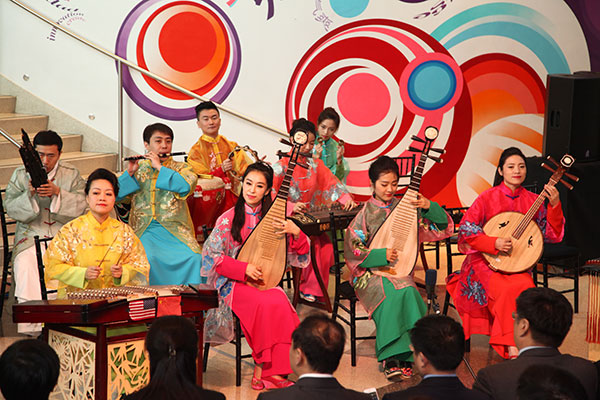
Chinese musicians tour the United States with performances of Chinese traditional music, as part of a culture exchange program.[Photo/China Daily]
Visitors to the World of Coca-Cola in Atlanta last month were surprised to find more than a dozen Chinese, wearing traditional clothing playing bamboo flutes and Chinese stringed instruments like the erhu, guzheng and pipa.
On May 8, a crowd gathered on the roof terrace of leading investment firm Goldman Sachs in New York and listened to the same group play century-old traditional Chinese songs with ancient instruments.
“Trees cannot grow into the sky, but music can,” said one audience member after the show.
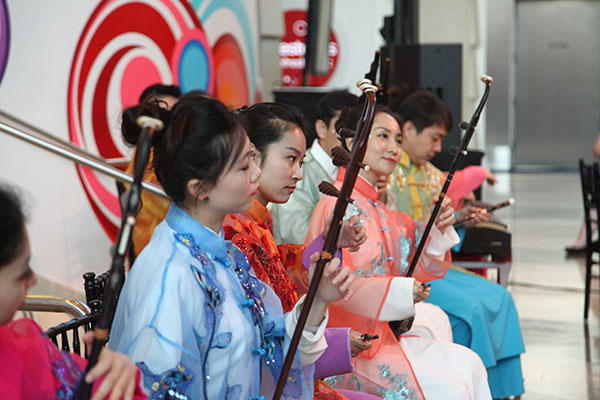
Chinese musicians tour the United States with performances of Chinese traditional music, as part of a culture exchange program.[Photo/China Daily]
The musicians who surprised and delighted people throughout the United States, are members of the China National Orchestra. Their performances in the US were part of a project run by the Chinese People’s Association for Friendship with Foreign Countries.
Called Qin Tai, which literally means “the table of Chinese traditional stringed instruments”, the project aims to connect China to the world by introducing traditional Chinese music to foreign audiences.
Li Xiaolin, president of the association, says the name of the project came from three historic sites named after Qin Tai in Sichuan, Hubei and Shandong provinces. Each place embodies the spirituality and elegance of traditional Chinese music.
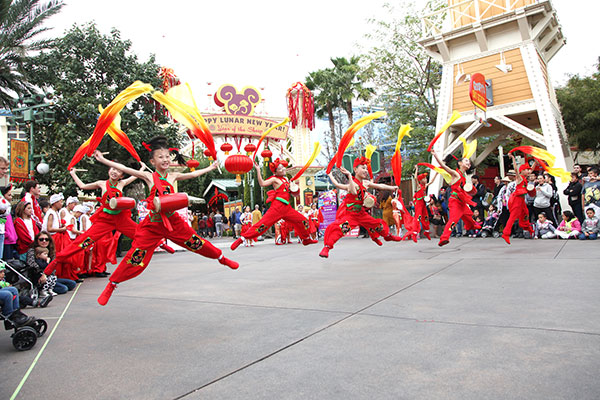
A group of young performers entertain audiences with a waist-drum dance show at US Disneyland in February.[Photo/China Daily]
The phrase Qin Tai is also the name of the place in an old Chinese legend. It is where Yu Boya played his instrument, a zither, with his friend Zhong Zhiqi, a woodcutter. Zhong was the only one who understood Yu’s music. After Zhong died, Yu broke his zither and never played it again.
“In that legend, Yu calls Zhong his zhi yin, or soul mate. We hope to share the beautiful ancient Chinese sounds with people, who are our zhi yin, around the world,” Li says.
“Chinese language is well promoted by the Confucius Institutes globally. We want to make learning about traditional Chinese music a delightful and pleasant experience as well,” Li says.
Li notes that when Chinese musicians playing traditional instruments travel abroad, they usually find themselves performing in concert halls or at big galas. With the Qin Tai project, shows and workshops will be held in public places, such as squares, parks and schools, which will enable the culture of Chinese instruments and music to move closer to the people.
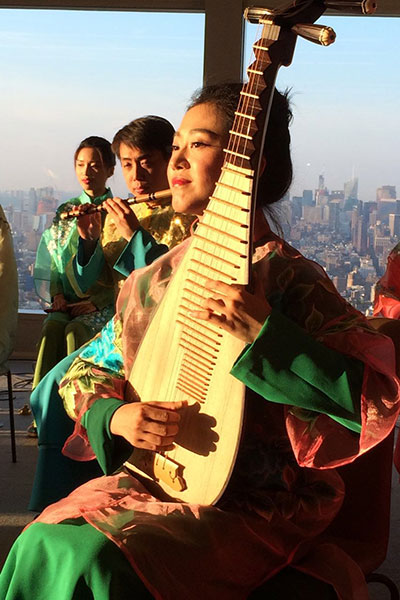
A group of young performers entertain audiences with a waist-drum dance show at US Disneyland in February.[Photo/China Daily]
In February this year, more than 20 children from Yan’an city, Shaanxi province, performed a yangko dance and a waist-drum dance for five days in Disneyland, Los Angeles, to celebrate Chinese New Year.
“It’s quite challenging because those ancient instruments are being threatened by contemporary music. Foreign audiences rarely have the opportunity to enjoy traditional Chinese music. But we’ve been seeking various approaches to promote traditional Chinese music not just domestically but also internationally,” says Xi Qiang, president of the China National Orchestra.
In 1997, the orchestra performed with the renowned cellist Yo-Yo Ma at Carnegie Hall in the US.
In 2014, when US pop singer Katy Perry performed in China and visited the orchestra, more than 90 musicians performed the singer’s hit, Roar, with traditional Chinese instruments.
“Those crossover performances enable traditional Chinese music to connect with today’s audiences,” Xi says.
“With the Qin Tai project, I believe the world will get to know more about our musical heritage.”
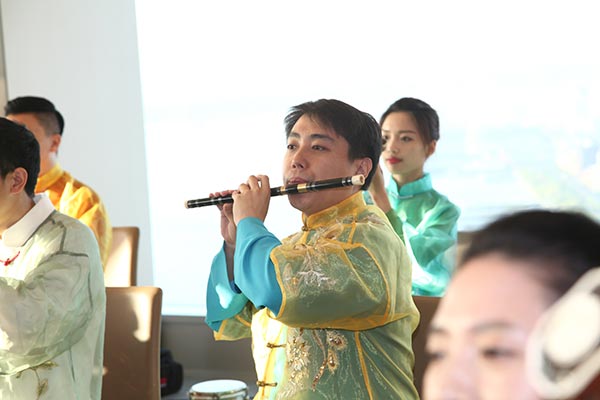
A group of young performers entertain audiences with a waist-drum dance show at US Disneyland in February.[Photo/China Daily]
